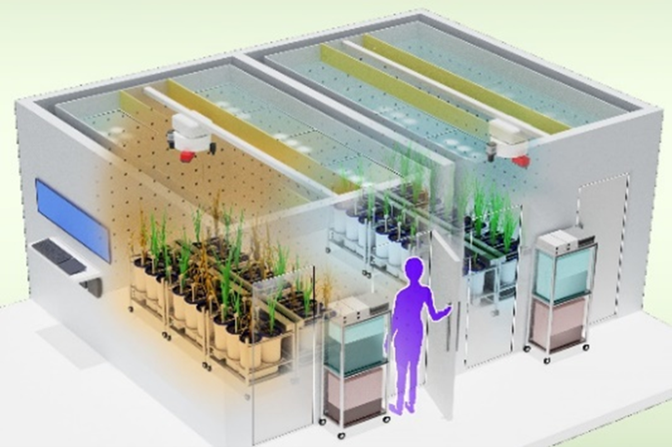2022-10-06 アメリカ国立標準技術研究所(NIST)
今回、米国国立標準技術研究所(NIST)のチームが、こうした通信の課題を解決する方法を実証した。この方法により、人工神経システムはいつの日か人間の脳の10万倍もの速さで動作するようになるかもしれない。
研究者たちは、従来の電子通信インフラを取り除き、各ニューロンに小さな光源を設置し、何千もの接続に光信号を送るネットワークを設計した。この方式は、超伝導デバイスを使ってフォトン(スパイクを表す最小の光信号)と呼ばれる光の粒子を検出すれば、特にエネルギー効率に優れている。
NISTの研究者たちは、生物のシナプスとよく似た動作をする回路を初めて実現し、しかも信号の送受信に単一光子だけを使用することに成功した。このような成果は、超伝導単一光子検出器を用いることで可能となる。
NISTの回路では、単一光子検出器とジョセフソン接合と呼ばれる超伝導回路素子との間で計算が行われる。ジョセフソン接合は、超伝導材料を薄い絶縁膜で挟んだものである。この接合部に流れる電流がある閾値を超えると、ジョセフソン接合はフラクソンと呼ばれる小さな電圧パルスを発生し始める。光子を検出すると、単一光子検出器がジョセフソン接合をこのしきい値以上に押し上げ、フラキソンが超伝導ループに電流として蓄積される。研究者は、接合部の一方にバイアス(回路に電力を供給する外部電流源)をかけることで、光子1個あたりにループに加わる電流量を調整することができる。これをシナプスの重みと呼ぶ。
この挙動は、生物のシナプスに類似している。蓄積された電流は、ニューロンが近い過去に何回スパイクを発生させたかを記録するため、一種の短期記憶として機能する。この記憶の持続時間は、超伝導ループ内の電流が減衰する時間によって決まるが、NISTの研究チームは、数百ナノ秒からミリ秒、あるいはそれ以上まで変化することを実証した。つまり、このハードウェアは、高速の産業用制御システムから人間とのゆったりとした会話まで、さまざまな時間スケールで発生する問題に適合させることができるのである。また、ジョセフソン接合へのバイアスを変化させることで異なる重みを設定できるため、より長期的な記憶が可能となり、ネットワークをプログラマブルにして、同じネットワークでさまざまな問題を解決することができる。
<関連情報>
- https://www.nist.gov/news-events/news/2022/10/nists-superconducting-hardware-could-scale-brain-inspired-computing
- https://www.nature.com/articles/s41928-022-00840-9
超伝導オプトエレクトロニクス単一光子シナプス Superconducting optoelectronic single-photon synapses
Saeed Khan,Bryce A. Primavera,Jeff Chiles,Adam N. McCaughan,Sonia M. Buckley,Alexander N. Tait,Adriana Lita,John Biesecker,Anna Fox,David Olaya,Richard P. Mirin,Sae Woo Nam & Jeffrey M. Shainline
Nature Electronics Published:06 October 2022
DOI:https://doi.org/10.1038/s41928-022-00840-9

Abstract
Superconducting optoelectronic hardware could be used to create large-scale and computationally powerful artificial spiking neural networks. The approach combines integrated photonic components that offer few-photon, light-speed communication with superconducting circuits that offer fast, energy-efficient computation. However, the monolithic integration of photonic and superconducting devices is needed to scale this technology. Here we report superconducting optoelectronic synapses that are created by monolithically integrating superconducting nanowire single-photon detectors with Josephson junctions. The circuits perform analogue weighting and the temporal leaky integration of single-photon presynaptic signals. Synaptic weighting is implemented in the electronic domain allowing binary, single-photon communication to be maintained. Records of recent synaptic activity are locally stored as current in superconducting loops, and dendritic and neuronal nonlinearities are implemented with a second stage of Josephson circuitry. This hardware offers synaptic time constants spanning four orders of magnitude (hundreds of nanoseconds to milliseconds). The synapses are responsive to presynaptic spike rates exceeding 10 MHz and consume approximately 33 aJ of dynamic power per synapse event before accounting for cooling. This demonstration also introduces new avenues for realizing large-scale single-photon detector arrays.



